Designer riads, rooftop feasts, hammams so good they might erase your past—here’s how to experience Marrakech like a royal with great taste and a better skincare routine.
By the seasoned team of travel writers, podcasters, and high-end hammam testers at Cerca. We’ve trekked across deserts, haggled in souks, and sipped mint tea where the walls are older than your grandmother’s tagine recipe.
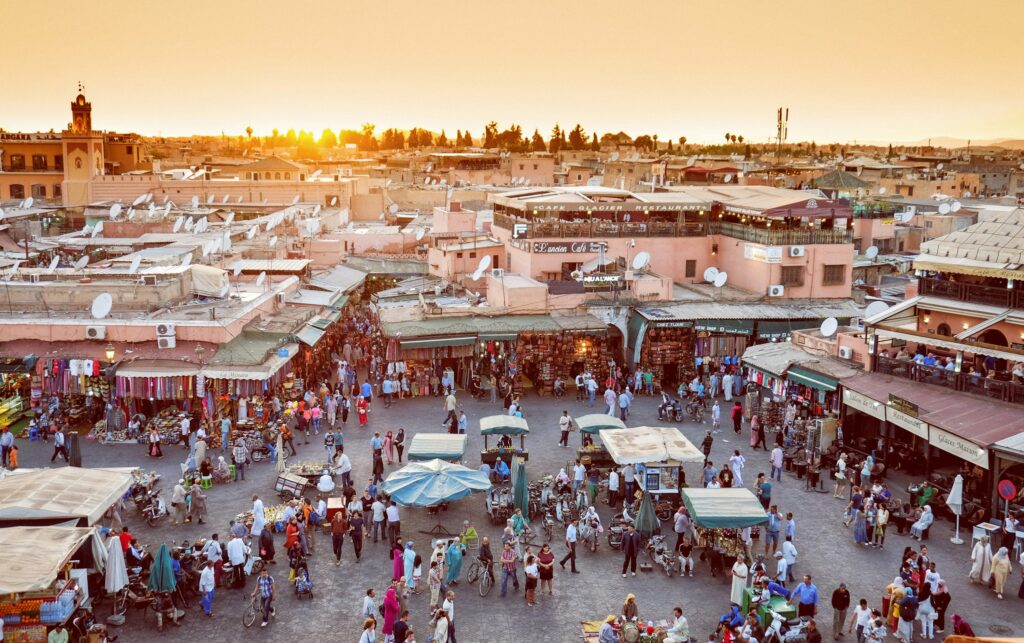
What to Know Before You Go: A Quick History & Culture Hit
Marrakech is more than a feast for the senses—it’s a city layered in centuries of empires, artistry, and audacious design. Founded in 1070 by the Almoravids, Marrakech quickly became the heart of a powerful North African empire. Its red clay walls (which earned it the nickname “The Red City”) have seen sultans rise, caravans roll in from the Sahara, and global style icons like Yves Saint Laurent fall madly in love with its mystique. The old medina is a UNESCO World Heritage Site, but it’s still pulsing with everyday life—from olive sellers and calligraphers to rooftop DJs and fashion-forward artisans.
Culturally, Marrakech is a blend of Arab, Berber, African, and French influences, all tied together by a rhythm that’s both ancient and forward-thinking. While luxury is abundant here, etiquette matters: dress respectfully (especially in the medina), always greet with a polite “salaam alaikum,” and be prepared to bargain with a smile in the souks. Fridays are the holy day, and things slow down—so plan your spa time accordingly.
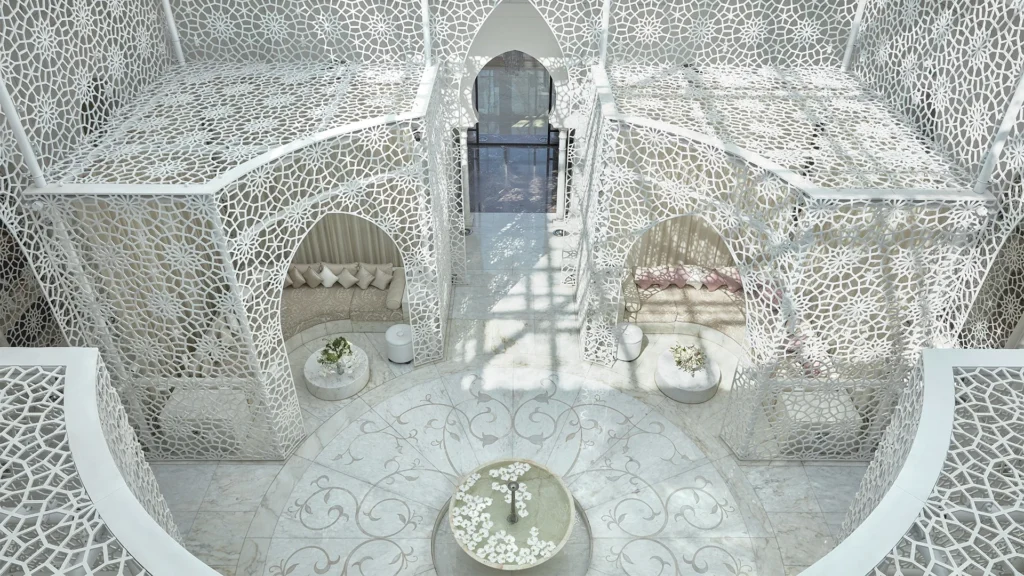
1. Check Into a Riad That Feels Like a Private Palace
Let’s be real: In Marrakech, your hotel is not just where you sleep. It’s the experience. Riads—those old medina homes built around lush inner courtyards—are the architectural equivalent of whispering, “I’m better than you” to every five-star resort you’ve ever seen.
Our top insider picks:
El Fenn: A riot of color, curated art, and rooftop everything. Owned by Vanessa Branson (yes, that Branson).
Royal Mansour: Built by the King of Morocco. You get a private riad and staff travel via underground tunnels. It’s extra—and we love it.
La Mamounia: The old-world grande dame. Winston Churchill slept here. So did every fashion editor with a passport.
Pro tip from our local experts: Choose a riad in the heart of the medina, but with modern soundproofing. Trust us. That 5 a.m. call to prayer will wake your third eye otherwise.

2. Take a Private Cooking Class in a Hidden Medina Courtyard
You haven’t really eaten Moroccan food until you’ve made it yourself—by hand, over charcoal, with someone’s grandmother watching you like you might over-season the couscous and singlehandedly insult her entire bloodline. Moroccan cooking isn’t just about following a recipe—it’s about rhythm and respect. It’s about knowing when the onions are soft enough for the tagine, when the saffron has steeped just long enough in warm water, and how to roll couscous between your palms until it’s light as air.
It’s also about storytelling—because while you’re folding delicate layers of warqa dough or grinding spices in a hand-carved mortar, someone is probably telling you about their great-aunt’s secret spice mix or the time they burned the harira during Eid and the whole family still talks about it. This is where luxury meets legacy—under the fig tree, with the smell of charred eggplant in the air and the quiet approval of a woman who’s been making this dish since before you were born. You won’t just leave with a full belly—you’ll leave with technique, a few secrets, and a story that tastes like Marrakech.
A luxury cooking class here often includes:
A private market tour through the medina, guided by someone who knows the spice vendors by name.
Cooking in a riad kitchen or lush courtyard filled with citrus trees and call to prayer echoes.
Making tagine, zaalouk, harira, msemen, and more—then eating it under the stars.
Our favorite: Souk Cuisine, which pairs you with local women chefs and lets you cook where they live and laugh. It’s high-end, but deeply personal.
Bonus: Your spices and new knife skills come home with you. So does that new addiction to preserved lemons.
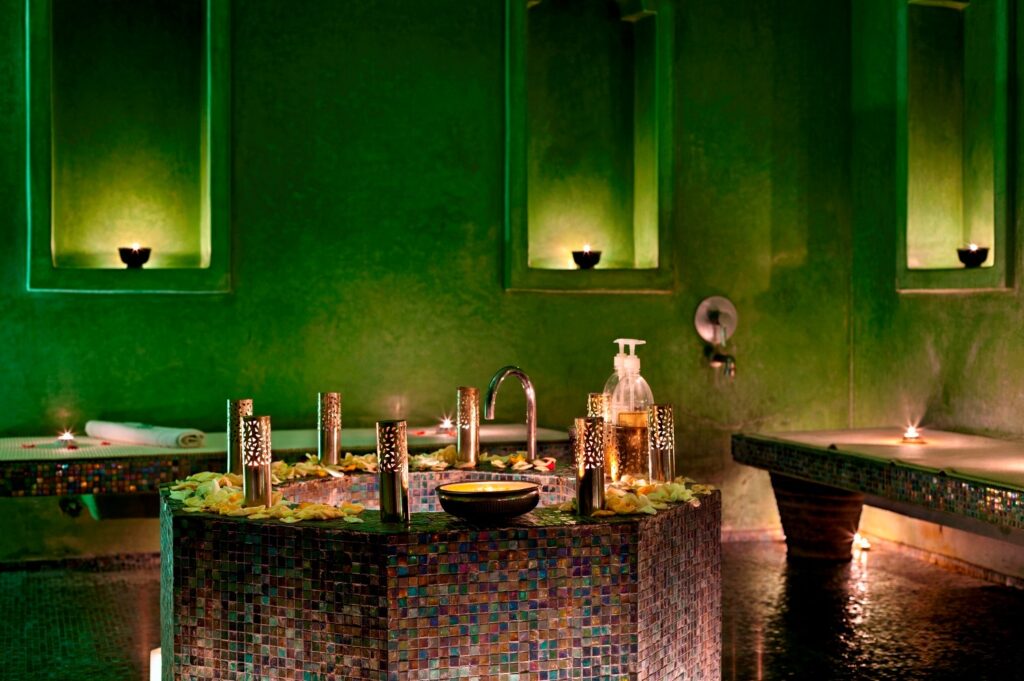
3. Get Hammam’d Into Another Dimension
Welcome to the deep cleanse of your life. A hammam is not a spa. It’s a ritual. A cultural moment. A full-body reckoning rooted in centuries of tradition. The Moroccan hammam traces its lineage back to Roman bathhouses and Ottoman cleansing rituals, but it evolved into something uniquely Moroccan—an essential part of weekly life, especially on Fridays, the holy day in Islam. Historically, it’s where neighbors gossiped, brides were prepped for their weddings, and generations learned the art of self-care long before skincare was an industry.
The luxury versions today are soft-lit and incense-heavy, with Berber oils, orange blossom-scented towels, and marble slabs that seem designed for royalty (because in many cases, they were). But the technique is the same: steam until your pores surrender, scrub until your past mistakes are exfoliated away, rinse in warm water like a baptism, and emerge as someone glowy enough to star in your own perfume ad. It’s wellness, but deeply cultural. Sensual, but sacred. And the ultimate way to start—or reset—your journey in Marrakech.
Go all in at:
Hammam de la Rose for a calm, candlelit version of the traditional scrub.
Royal Mansour Spa for a hammam temple made of carved lattice and white marble.
Heritage Spa if you want chic but still authentic.
Pair it with an Argan oil massage, and you’ll leave so relaxed they might have to wheel you out like Cleopatra.
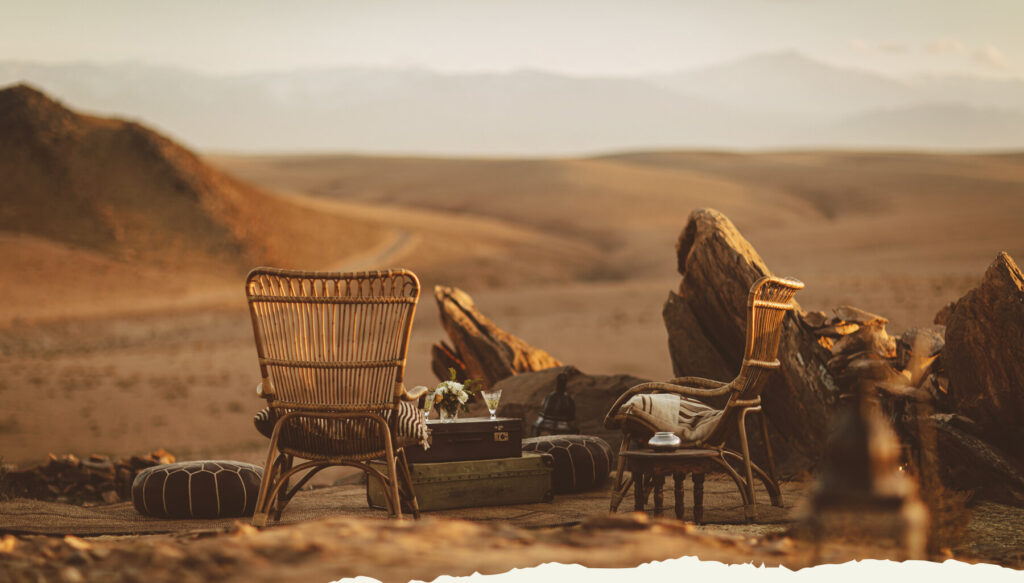
4. Dine Under the Stars at a Desert Camp
Sure, Jemaa el-Fnaa is chaotic and electric—but dining in the Agafay Desert, just outside the city, is pure cinematic magic.
Imagine this: You’re driven out in a vintage 4×4 to a hidden desert camp where lanterns flicker, Gnawa musicians play, and a private chef grills lamb and aubergine over an open flame as the sun dips below the dunes.
Who does it best:
Scarabeo Camp: Boho-luxe tents, panoramic views, and Berber hospitality turned up to eleven.
La Pause: A sustainable eco-lodge with candlelit dinners and no electricity. Just stars, wine, and silence.
It’s romantic, it’s surreal, and it’s 100% the luxury Marrakech secret most travelers miss. Until now.
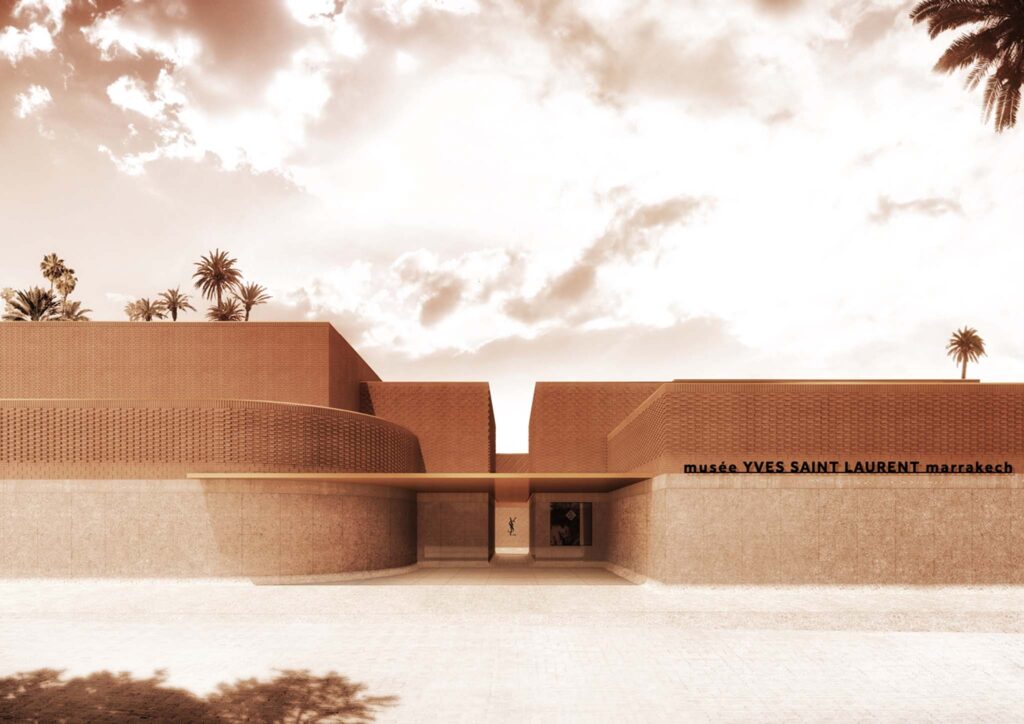
5. Explore the Yves Saint Laurent Legacy (In Silk, Obviously)
Marrakech was Yves Saint Laurent’s muse. And now, you can step into his mind—and his color palette.
Start at Jardin Majorelle, the electric-blue botanical garden that YSL helped save from ruin. Then go next door to the Musée Yves Saint Laurent Marrakech, a curvaceous masterpiece of architecture filled with the designer’s sketches, gowns, and personal obsessions with Moroccan craftsmanship.
But here’s the move: book a private guided tour with a fashion historian or local designer. They’ll walk you through not just the museum, but also hidden artisan studios in the medina.
Insider pro move: Shop at 33 Rue Majorelle—the most curated luxury concept store in the city. Think Moroccan design, minus the clichés.
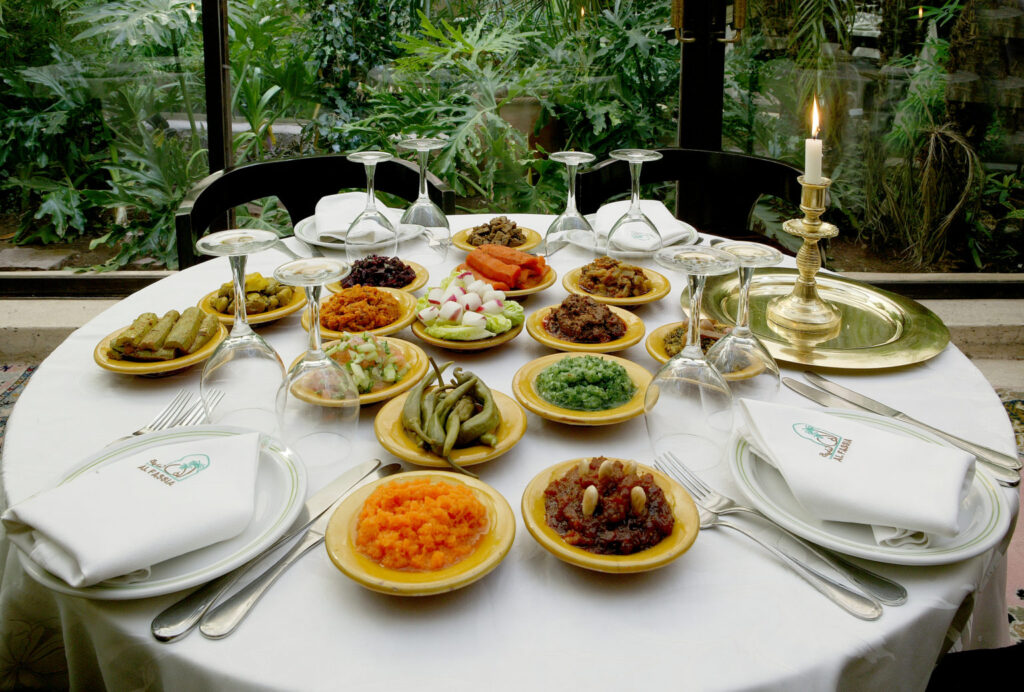
6. Eat at the Restaurants Locals Actually Whisper About
Everyone talks about Nomad and Le Jardin. And yes, they’re great. But the real luxury food scene? It’s in the whispered-about spots, the rooftop-only access places, and the hideaway fine-dining rooms only locals and destination experts know.
Our curated list:
Al Fassia: Run entirely by women. Old-school, elegant, and famous for its lamb shoulder.
Dar Yacout: A riad-palace with set menus and atmosphere so good you’ll want to dress in gold.
La Table by Madada (in Essaouira, for the side trip crowd): Oysters, Atlantic views, and Moroccan-French fusion done right.
For something modern and theatrical, try Plus61—an Aussie-Moroccan fusion concept where sustainability meets serious chef cred.
Always ask for the rooftop table. Always.
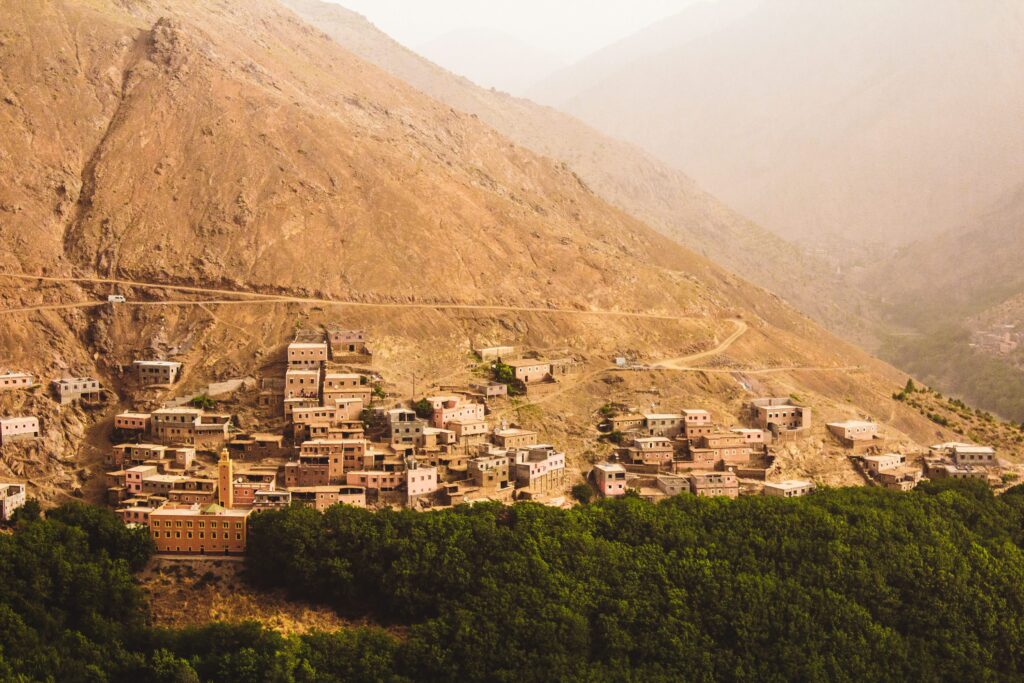
7. Take a High Atlas Cultural Day Trip—With Champagne
Just an hour from the city, the High Atlas Mountains rise up in all their cinematic glory. You could go for a basic hike. Or—you could go the Cerca way: private 4×4 transfer, English-speaking Berber guide, and lunch in a mountain village served with chilled rosé and goat cheese made that morning.
Best ways to do it:
Book a private tour with Kasbah du Toubkal—a legendary mountain lodge built in partnership with the local community.
Visit the Ourika Valley for waterfalls, saffron farms, and artisan stops.
End your hike with a hammam overlooking the peaks (at Terres d’Amanar, perhaps), because this is luxury and you earned it.
This is slow, local, luxe adventure—with a soul.
Final Words From the Souk
Marrakech isn’t just a destination—it’s a sensory takeover. It’s the call to prayer echoing through tiled courtyards, rose petals floating in your mint tea, the buzz of a medina alley at dusk… and the silky cool of a riad room waiting when you’re done.
Luxury here isn’t about excess—it’s about immersion. It’s curated design, centuries-old rituals, and the kind of food that makes you rethink every takeout order you’ve ever had.
So yes, come for the rooftop cocktails. But stay for the hammams, the heritage, and the honey-soaked pastries made from 17th-century recipes. With a side of saffron and a view of the Atlas Mountains.